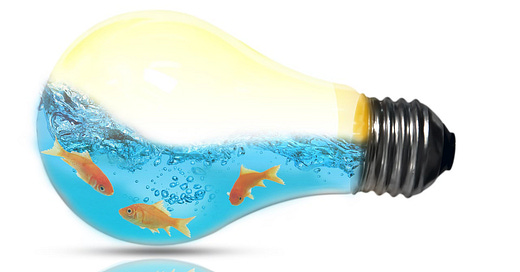Reimagining is the last of 10 Megatrends! What started as a whiff of a countertrend when I first started tracking global trends has grown into a prolific reimagining of every facet of our lives. We’re questioning parenting, science, money, nation states, legal frameworks, separation of powers, global order, life, death, and happiness.
For more on this series, see end of this post. Next, we’ll look at the opportunities created by these megatrends.
Image credit: Dave Kosgei for Pixabay.
There is broad consensus that most current socio-economic systems are not effective or sustainable: they have created and continue to exacerbate problems that threaten the collective future on this planet.
To avoid what the scientific community predict as devastating and compounding social and environmental collapse (as documented by the Organization for Economic Co-operation and Development, OECD), the world needs to change both urgently and comprehensively, the latter exemplified by the scope of the United Nations Sustainable Development Goals (UN SDGs).
It is also broadly agreed that social systems need to look radically different than they do today, but that the existing systems are not changing along the required trajectory at a pace commensurate with that urgency. As aptly summarized by Terry Irwin among a formidable cohort of today’s brightest minds, “Fundamental change at every level of our society, and new approaches to problem solving are needed to address twenty-first-century ‘wicked problems’ such as climate change, loss of biodiversity, depletion of natural resources, and the widening gap between rich and poor.”[1]
Our laws and policies are being reconsidered because they never imagined today’s realities. Furthermore, seemly every norm is being questioned because our lives no longer sufficiently fit into them.
The UN Convention on the Rights of the Child didn’t exist when I was born! Is it any wonder that we’re reimagining normative and legal frameworks for a world where one in 30 of us is living in foreign country?
Perhaps for the first time in human history, we’re questioning everything. While unsettling, it opens us up to possibilities! Next, we will look at what these are.
Concluding the Megatrends Series
Before we move on, I would like to make three points:
Megatrends are neutral in nature. They describe a dynamic without judging it to be good or bad. In fact, the extremes can prove both constructive and destructive.
Each megatrend describes a major under-current, not the entirety of what can be observed. Trends are akin to biological mutations: they are innumerous. It is only when some mutations are both persistent and offer clear advantages that they come to dominate.
Counter-trends — those that can bring an outrageous trend into check or resist change altogether — can be equally insightful.
This concludes our 360-degree tour of the megatrends shaping tomorrow! Remember, we embarked on this journey because the most effective changemakers operate at the intersection of their purpose, skills, and what the world needs – this series focusing on the latter! I hope you have enjoyed the stimulation as well as reflected on how these megatrends might manifest in your world.
Next, we’ll look at the opportunities created by these megatrends!
On the Megatrends series
I have earned an international reputation for leveraging global trends to create positive transformation. Having (1) introduced this concept and (2) set the stage through earlier posts, I now guide you on a 360-degree tour of today’s change landscape!
Reimagining is the last of the ten megatrends, with Gluttony, Abstraction, Permeability, Collective power, Cacophony, and Obsolescence Pandemic, Nomading, Angst, and Thirst for Meaning covered by previous posts and woven into the roadmap for regenerative transformation that is Change-maker’s Handbook (2023).
See if you might read/listen actively. Consider these questions:
How does this trend manifest in your world? Society at large? Your family, community, or team(s)? Your investors or donors? The people your purpose calls you to serve?
Importantly, how does it play out in you? In your own motivations or struggles?
What shifts in what is possible, acceptable, or both underpin this trend?
Who — brands, politicians, non-profits — ride this trend? Do they succeed or fail? Why?
What does this trend make possible that was impossible before?





I almost see it as a realising all the stories we told ourselves to feel safe and in control in a world of constant change. We are realising these are stories, not reality and reality is knocking.